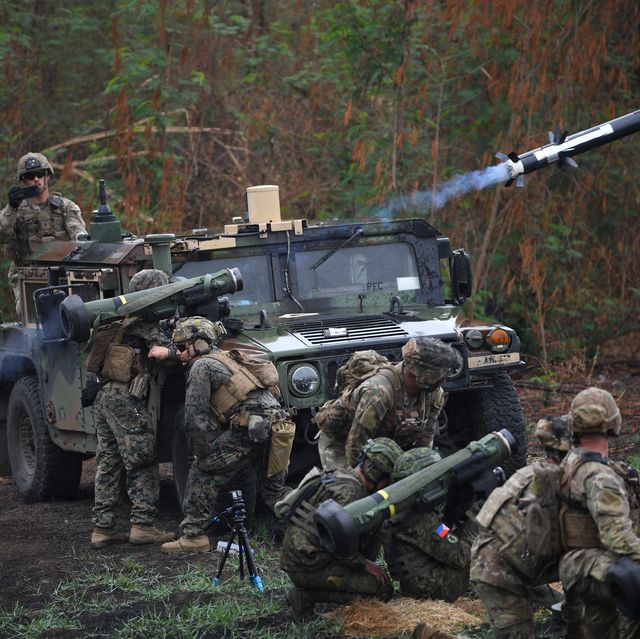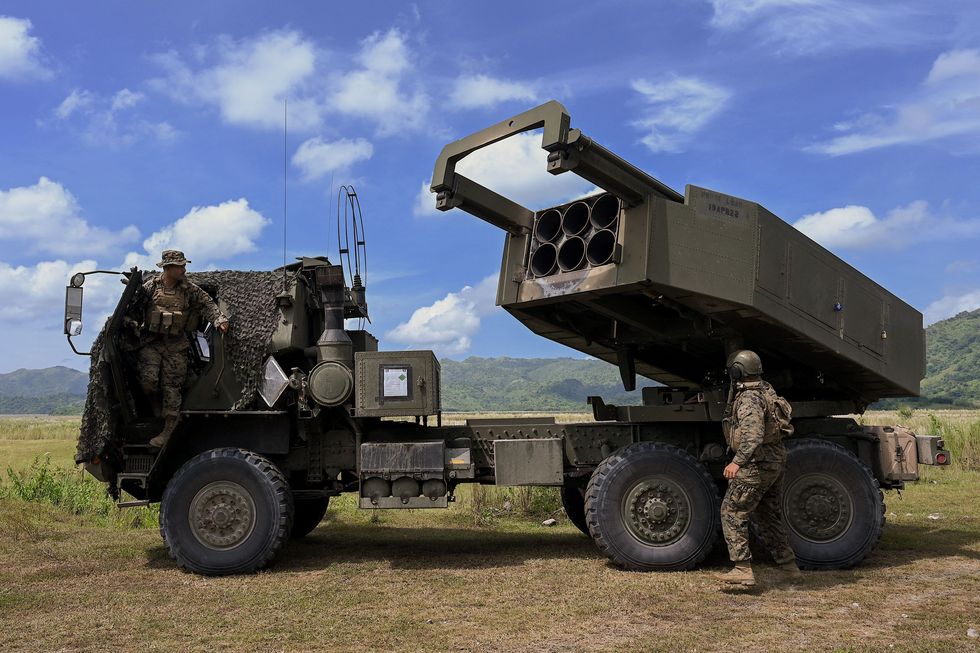- The U.S. Marine Corps is in the process of reinventing itself to deal with future threats . . . and future budgets.
- The service is concentrating on island and littoral missions, and going lighter and more mobile as a result.
- The plan, Force Design 2030, aims to make the Corps an indispensable tool in America’s toolbox.
The U.S. Marine Corps is undergoing its biggest reorganization in decades, slimming down and chopping weapon systems, such as tanks and howitzers, in an effort to become quicker, more agile, and more lethal, while specializing in operating in island chains and coastal areas. It’s all built on the service’s belief that the next war will resemble World War II far more than Iraq or Afghanistan.
Force Design 2030
After the Cold War, the Marine Corps began to resemble a second American land army; the Marines invaded Iraq over land in 1991 and again in 2003, and were functionally a land army in Afghanistan from 2001 to 2021. While the Marines were successful in this role, it was clear that with an aging U.S. population and rising entitlement spending, defense budgets would soon come under increasing scrutiny. Those inside the Marine Corps believed its role as a second land army would make the service seem redundant, bracing for future cuts.
If the Marines were to survive the coming budget wars, the Marine Corps’ leadership argued, the service would need to be seen as necessary within a well-defined and relevant niche. The result was Force Design 2030, a radical plan to sculpt the Marines to operate against Russia and China in coastal areas, the so-called littorals, and island chains and archipelagos. This included areas such as the Baltic Sea against Russia and the South China Sea against China—both areas where fighting would likely take place if the U.S. and its allies traded blows with Moscow and Beijing. Perhaps most importantly, it is the sort of warfare the U.S. Army has shifted its attention away from, giving the Marines the opportunity to seize it for themselves.
Hard Choices
Force Design 2030 instituted a number of hard changes. The Marine Corps eliminated tanks from its global inventory, transferring more than 450 to the U.S. Army, plus the heavy bridging equipment that would allow tanks to cross rivers, ditches, and other obstacles. The Marines are sharply reducing the number of M777 155-millimeter howitzers, and instituting modest cuts to tiltrotor and helicopter squadrons. The Corps is also reducing the number of infantry battalions from 24 to 21, and cutting each battalion’s manpower by 10 percent. The Marines will maintain their target of 420 F-35Bs and F-35Cs, while reducing the number of aircraft per squadron from 16 to 10.
The eliminations and reductions are designed to make the service lighter and more easily deployable. M1A1 Abrams tanks are highly capable, but less useful fighting on the small artificial islands China has built in the South China Sea, and the Marines believe sea and air-based drones can provide the same firepower. The M777 howitzer has a minimum range of 1.6 miles, leaving them unable to provide fire support on small islands. Manpower cuts to fund new equipment purchases would result in the need for fewer helicopters and tiltrotors like the UH-1Y Venom and MV-22B Osprey.
Meanwhile, the Marines will boost other categories of equipment and buy new kit. The service will expand its inventory of HIMARS rocket trucks and precision-guided rockets that have proven invaluable in Ukraine. It’s also purchasing NMESIS robotic vehicles armed with the new Naval Strike Missile. Other equipment will include land, air, and sea drones that are lighter and can locate and destroy enemy positions faster than a 70-ton tank.
Fighting in the Littorals and Tiny Island Hopping
On the plus side, the Marine Corps is standing up three Marine Littoral Regiments (MLRs). MLRs are ground units designed to project power not only on the ground, but into the nearby sea and air zones. While past Marine units have been centered on land power, the MLR recognizes that land, air, and sea power are all interlinked and addresses all three. The idea is that, once emplaced, a Littoral Regiment can scatter smaller subunits armed with sensors, anti-ship missiles, and air-defense missiles throughout an area. The MLR is built around a reinforced infantry battalion, an air-defense battalion, and a logistics battalion.
In practice, it would work like this: in the event of conflict, an MLR would use its infantry battalion to carve out an advance base on an enemy-held island. Next, it would use anti-ship missiles and air-defense missiles to fortify its position, creating a keep-out zone for the enemy. Instead of concentrating all anti-ship and surface-to-air missiles in one location for ease of control, it would spread them out across a wide area to prevent destruction in a single, catastrophic attack. (Spreading out its forces would also allow the Marines to control a larger area.) Once the enemy is on the ropes, the MLR can advance again, its infantry leapfrogging to the next island, the regiment’s missile forces following along.
The Marines will stand up three Marine Littoral Regiments, each of 1,800 to 2,000 Marines and sailors. The first MLR, the 3rd Marine Littoral Regiment, is based in Hawaii, with a second to be based in Okinawa, Japan. The location of the third regiment is unknown, but will probably be oriented toward the Atlantic Ocean, the Baltic Sea, and Russia.
The Takeaway
During World War II, the Marine Corps hopped from island to island in the Pacific, taking the war all the way to Okinawa, Japan’s doorstep. China has claimed up to 90 percent of the South China Sea with dozens of islets, and the next war might well look like WWII in miniature—but with even greater stakes between two nuclear-armed powers.
The best way to deter Beijing could be to create a mechanism to wrestle the South China Sea away from Chinese control. That mechanism, if the U.S. Marine Corps has anything to say about it, is the U.S. Marine Corps.

Kyle Mizokami is a writer on defense and security issues and has been at Popular Mechanics since 2015. If it involves explosions or projectiles, he's generally in favor of it. Kyle’s articles have appeared at The Daily Beast, U.S. Naval Institute News, The Diplomat, Foreign Policy, Combat Aircraft Monthly, VICE News, and others. He lives in San Francisco.

















